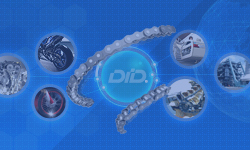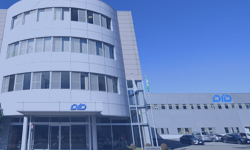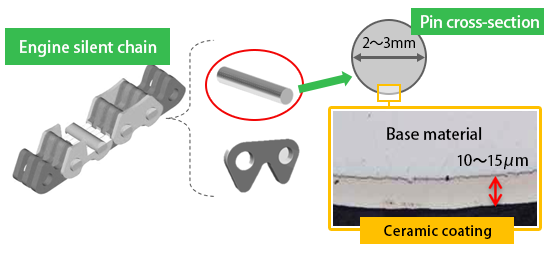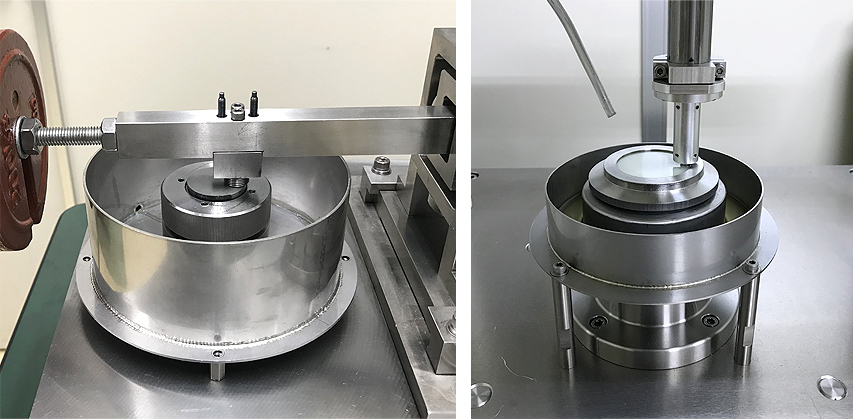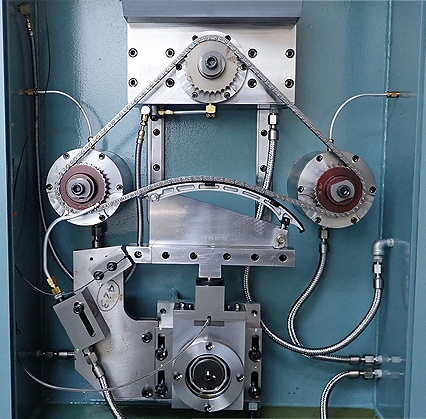We have long been engaged in the development of surface treatment technology (metal coating) to improve the abrasion resistance of engine chain pins, which are used in harsh operating environments.
Our original patented product, a car engine chain coated with VCN (vanadium carbonitride), has a higher abrasion resistance than conventional products, thus prolonging life and downsizing and reducing the weight of the chain.
We are proactively applying our chain manufacturing technology and knowhow to other products with the aim to create added value such as improved abrasion resistance and the reduction of surface damage.

